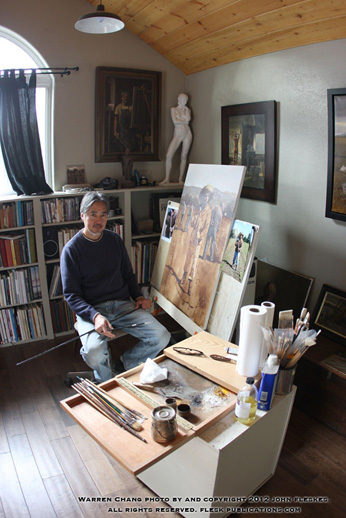
With our new book, Warren Chang: Narrative Paintings, available, I thought it a good time to sit down with Warren Chang and ask him some questions. The time spent with him in producing this book has been one of pleasure. I’ve found Warren to have a deep knowledge of himself and his paintings. We talk about sincerity, balance, choice of subjects, family and more to find how all of these ingredients make Warren the painter that he is.
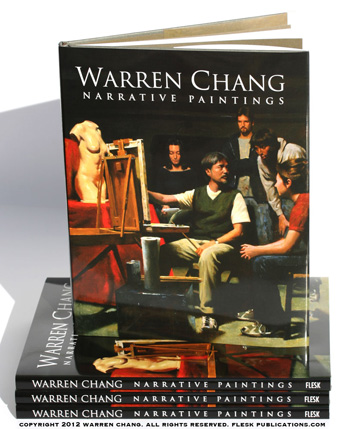
Sample spreads from the book are interwoven throughout. They can be clicked on for larger views.
Warren Chang: Narrative Paintings Book Interview
Copyright 2012 John Fleskes and Warren Chang. All Rights Reserved.
John Fleskes: Why select the title “Narrative Paintings” for your new book collecting your fine art paintings?
Warren Chang: I addressed this subject to some extent in the preface of my book. I think it describes the kind of painting I do well. Frankly the word “narrative” implies to the contemporary art world that the art is “illustrative,” not to be taken seriously. I wanted to embrace my roots and take ownership of the narrative and illustrative nature of my artwork. My work is narrative in nature but not obvious. I think a work of art is more powerful when there is an air of mystery. It’s more open to interpretation and the story is not too spelled out.
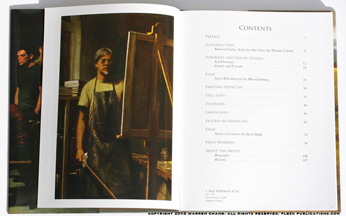
Fleskes: When people view your paintings what do you hope they get out of them?
Chang: I hope they “get it.” Now what exactly that is, I’m a little reluctant to talk about, but certainly there is a certain mood; a feeling that I’m trying to convey. If I have to spell that out, then it’s probably not working. The art should speak for itself.
I do feel it’s open to interpretation and the viewer, as participant, is also part of the creative process in that the viewer also must be an artist in how they view any work of art.
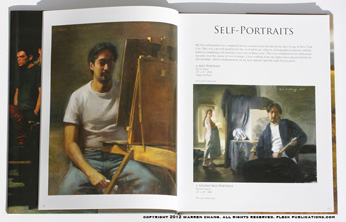
Fleskes: As a painter, do you intentionally attempt to project feelings through the use of color and imagery into people when they view your art?
Chang: Yes, absolutely, nothings an accident.

Fleskes: I hear you speak of “honesty” and “sincerity” with your paintings often. What do you mean by this and why is it important to you?
Chang: If a piece of art is honest and sincere then it will connect with some part of your audience because we all share a common humanity. I can only paint or communicate what I feel or believe and only hope that others will relate. In that way, an artist bares his soul, it can be a little unsettling observing the reactions to one’s work.
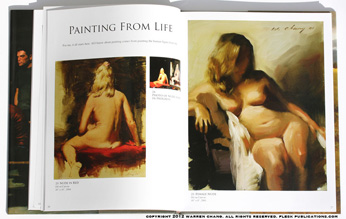
Fleskes: With “Narrative Paintings,” besides this being a gallery of your fine art spanning the last decade, you incorporate your own text with each work. What is your goal with this collection? Who do you envision this book is for?
Chang: The accompanying text is simply there to help shed more light on the thinking and process of each painting. If we look back historically, we can only wish we knew what motivated the great artists’ of our past. So with a contemporary painter, like me, it’s nice to have the opportunity to convey these thoughts in a book.
The one word I can think of for the goal of this book is to “inspire.” I hope this is not asking too much but I hope this book will inspire artists and would-be-artists around the world.

Fleskes: How does family and a balance in your life relate to your paintings? What do you need in your life to paint to the best of your abilities?
Chang: I think these two questions can be addressed at the same time. A good friend and fellow artist once remarked to me that perhaps my family was a bit distracting to my art. In fact he was correct, but honestly, without them I’d be lost and even less productive. I owe everything to my family. They give me the stability and purpose to focus on the work at hand. In fact, much of my work is really about “family.” The interiors are pretty much biographical and my family seeps into the subjects and focus of many of my paintings.
So if my family gets in the way of my work at times, I wouldn’t have it any other way.
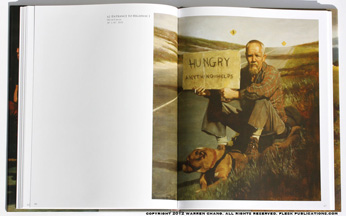
Fleskes: Do you have a favorite piece that is reproduced in “Narrative Paintings” and what makes it successful to you?
Chang: That is a hard question. There are many I’m fond of and for so many different reasons. Right now, I would have to say its “Entrance to Highway One,” The painting depicts a homeless drifter on the edge of a highway. It was painted specifically for a traveling exhibition titled “Hard Times: An Artist’s View” in 2010. We were asked to paint are reactions to the current economic times which seemed to mirror, to a lesser extent, the Great Depression of the 1930’s which inspired so many great paintings from that era.
The model and painting seemed to epitomize the theme of the exhibition. I was greatly inspired by the theme of the exhibition; a theme of what seemed to me of much substance and in the company of so many artists I had admired, such as Burt Silverman, Harvey Dinnerstein, Max Ginsburg and Steven Assael.
A friend upon observing my two painting of homeless men for this exhibition, one being “Entrance” and the other “Portrait of Bill,” which depicted an old homeless man, remarked that in “Portrait of Bill” you see this kind of a homeless man in all times, while in “Entrance” the man is able bodied and capable of work, yet drifting and homeless. “That’s me if I lose my job,” he remarked. “I would be right there alongside him along with my family and dog.” It dawned on me that the character I had portrayed was “every-man” and that the common man could relate to the plight of this man. So in that way, it succeeded.
I can’t tell you how much I searched for just the right homeless man for these two paintings; the extents I would go to find the right subject. More often than not finding the right subject, or in this case, the right model, can contribute so much to the success of a painting.
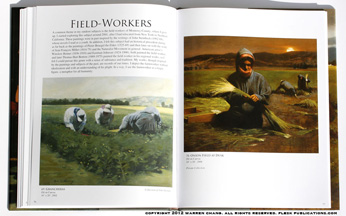
Fleskes: You often portray the every-man and every-women, field-workers, and sometimes the disenfranchised. What is it about them that are attractive to you? Why is it important that you document them?
Chang: Good question. I don’t have a background of hardship, of having worked in the fields, or anything like that. I grew up relatively comfortable, although as a minority in America. I grew up in and continue to live a normal middle class life, so my attraction to the struggling class of people comes from something. But, I’m not exactly sure. I somehow do relate to their plight as I feel it’s the plight of all man throughout history.
Philosophically, I feel in great art, the struggle for life, even tragedy, as demonstrated by the plight of the field-worker for example, goes deeper, has more substance in terms of the sense of humanity that we all share.
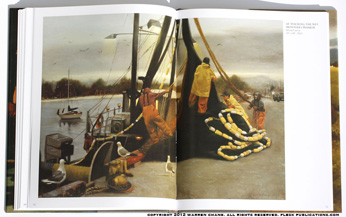
Fleskes: Why do you think people find your choice of subjects so appealing? Is the connection formed between them and your paintings intentional, or are you being purely true to yourself and people connect to that instead? (The honesty?)
Chang: I don’t know that people do find my choice of subject appealing. If they do, that’s great.
I paint what I paint regardless of the reaction or whether or not it “sells.” I have found that some people connect with my paintings of the fieldworkers and usually for different and varying reasons. And it’s these reactions that actually inform and educate me on the subject, so it’s an ongoing process.

Fleskes: Your compositions vary from painting to painting making each truly unique. There appears to be a lack of redundancy. Each one is a singular statement. Can you talk about this and why is this important to you?
Chang: Yes. I once was told by a gallery director that, “I don’t need to reinvent the wheel every time I paint a picture.” For me, almost every painting is an entirely new project and undertaking. It’s like I’m writing a new novel or making a new movie.
It often takes me months, if not years, to formalize an idea for a painting. I envy those painters who seem to repeat the same theme over and over again, varying little from one painting to the next. It’s this direction the commercial galleries prefer once they discover a product that sells, and perhaps that may be why I’ve had little success there.

Fleskes: I’ve heard you say that you value the “thinking” behind your work more than anything else, such as the skills behind a painting. Can you explain?
Chang: What I was just elaborating on, kind of explains that. There is an old Chinese proverb, “Read 100 books and paint one picture.” I find a lot of truth in this statement. You have to think before you can create anything of substance and meaning.
I’m alarmed with the over preoccupation with style, and technique and skills in art today. We forget that these are only the tools to creating great art, not an end in itself.

Fleskes: What have you discovered about yourself through painting?
Chang: I’ve discovered that art is life. Searching for the meaning of art is the same as searching for the meaning of life. There are no answers but that does not mean we don’t keep searching and trying to figure things out.
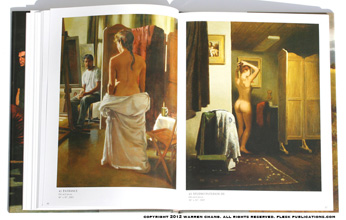
Fleskes: Thank you for your time, Warren.
Enjoy,
John
John Fleskes
Flesk Publications
Links:
Warren Chang Narrative Paintings at Flesk Publications
Warren Chang official website